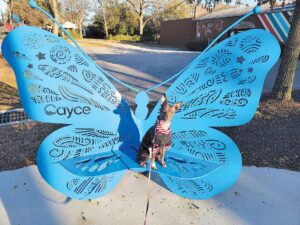
Training a sit stay outside with strange objects and new environments takes gradual practice. Kelly Whittington’s Maze is doing great.
The holidays are over. Was it relaxing for you or did your dog drive you crazy? Is it time to make a New Year’s resolution that you will help your dog learn some better manners? Good news…it’s never too late to train your dog. Even if your dog is older, clear, consistent, positive training can help you and your dog enjoy your relationship even more.
In 2010 the Association of Professional Dog Trainers (APDT) began the National Train Your Dog Month campaign to bring awareness to the importance of socialization and training and to inform the public that training a dog can be fun.
It’s easy to get started. Sign up for a group training class or private lessons with a force free trainer so both you and your dog can have fun training. Most group classes are a relatively inexpensive option, but your dog must not be aggressive or a persistent barker. A group class will not only get you started in training desirable behaviors, but a good instructor will also take the opportunity to teach you the “whys” of your dog’s behavior.
If you prefer to train your dog yourself, there are many good resources (and some bad ones, too) like the Association of Professional Dog Trainer’s website for Train Your Dog Month, www.TrainYourDogMonth.com. Books by Teoti Anderson, Pat Miller, Sophia Yin, Jean Donaldson, and Denise Fenzi are excellent and are available through Amazon and www.dogwise.com. Training videos by Zak George, Kikopup, Chiraq Patel, Laurie Luck (Smart Dog University), Kevin Duggan (All Dogs Go To Kevin), Donna Hill (Dogs Explained), Doggie U, and Training Positive are a few. However, like everything else on the internet, you must be careful about the sources you find. There is a lot of outdated and incorrect information spread through some dog trainers, since dog training is not a licensed profession.
Management and preventing unwanted behaviors is the first step to successful training. When a dog practices unwanted behaviors like running out the front door or jumping on people, he is more likely to repeat that behavior. Baby gates, leashes, and crates are great tools to prevent unwanted behaviors.
For your dog to be reliably trained, you must practice in lots of different environments. Dogs learn differently than people, they don’t generalize what you teach them. This means if your dog reliably sits in your den, he may not transfer that knowledge to a new environment with distractions. Your dog may also sit reliably when you are practicing in the kitchen, but if you have guests over and there is excitement and noise, your dog may be too distracted to perform the cue.
Don’t get frustrated, or as many trainers say, “Train, don’t complain.” If you get stumped or the dog’s behavior is getting worse, don’t wait long to contact a professional, force-free trainer. A good resource to find a qualified reward-based trainer in our area is the Alliance of Force Free Animal Professionals, www.Alliance-of-Force-Free-Animal- Professionals.com.
Work training into your everyday life. Training sessions should be short, only three to five minutes for young dogs. Older dogs have longer attention spans and can easily handle positive, successful training sessions of 15 minutes or more. Like exercise for people, if you work training sessions into your everyday life, you are more likely to stick with it. APDT has lots of great ideas on how to do that. For example, to get a reliable sit, have your dog sit to get his dinner, sit to go outside, sit to have a toy thrown for him, and sit to be petted. You don’t have to reward your dog with a treat, getting what he wants is his reward. And the bonus is your dog will soon automatically sit to ask for what he wants, a polite sit will become his default behavior.
Practice asking your dog for a down stay by the table while you eat dinner. (Provide him with a chewy or stuffed Kong™ toy to enjoy while you eat.) Practice sit stays while you unload the dishwasher or put up groceries. Play a hide and seek game inside or in the yard to practice coming when called.
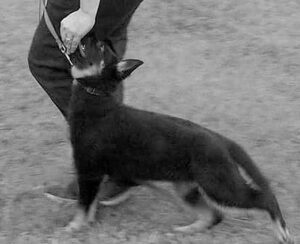
Jill Doherty is teaching her puppy the foundation skills for walking on lead by rewarding him for staying at her side.
Another hint for successful dog training is to make a list of all the things your dog really loves and vary your rewards. Rewards can be food, toys, or play. Despite what you may think, petting is rarely an appropriate reward. Rank the rewards in a hierarchy. For the more difficult or important exercises, such as coming when called or when training in more distracting environments, reward with the higher value items and vary them.
But most of all, make sure you and your dog have fun training. Training should improve your relationship, not damage it.
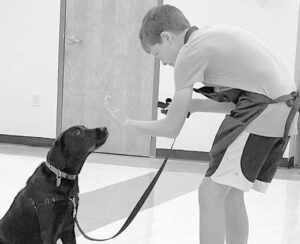
If you are struggling with training your dog yourself, a group class may be an affordable way to get the help you need.
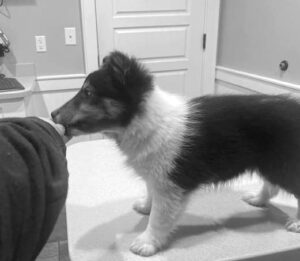
Training obedience cues is important, but so is training your dog to be comfortable at the veterinarian’s clinic. Natalie Bridger Watson is helping puppy Merit learn that vet clinics are good places.
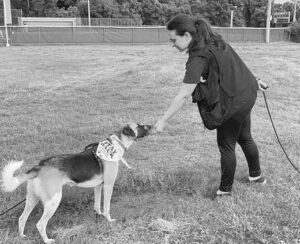
Abbey Smith is working with her dog Roux on a long line so that Roux can enjoy walks with more freedom.




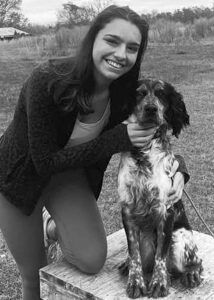
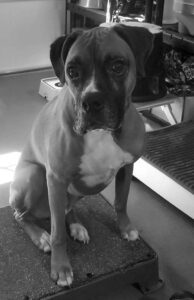
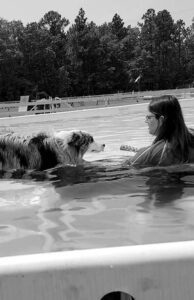
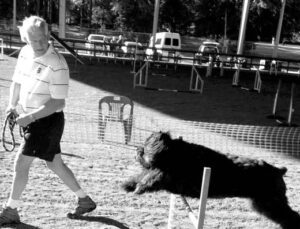
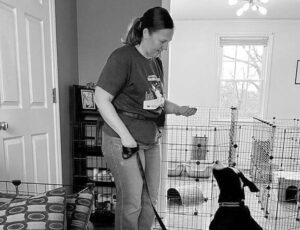
Leave a Reply